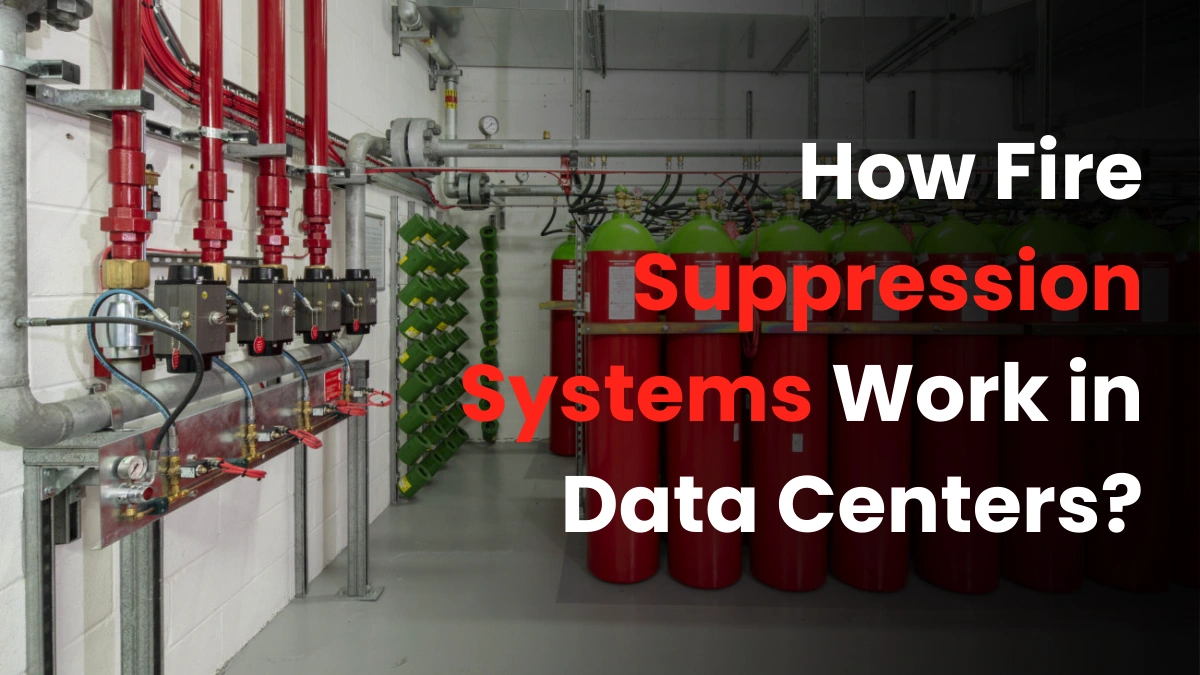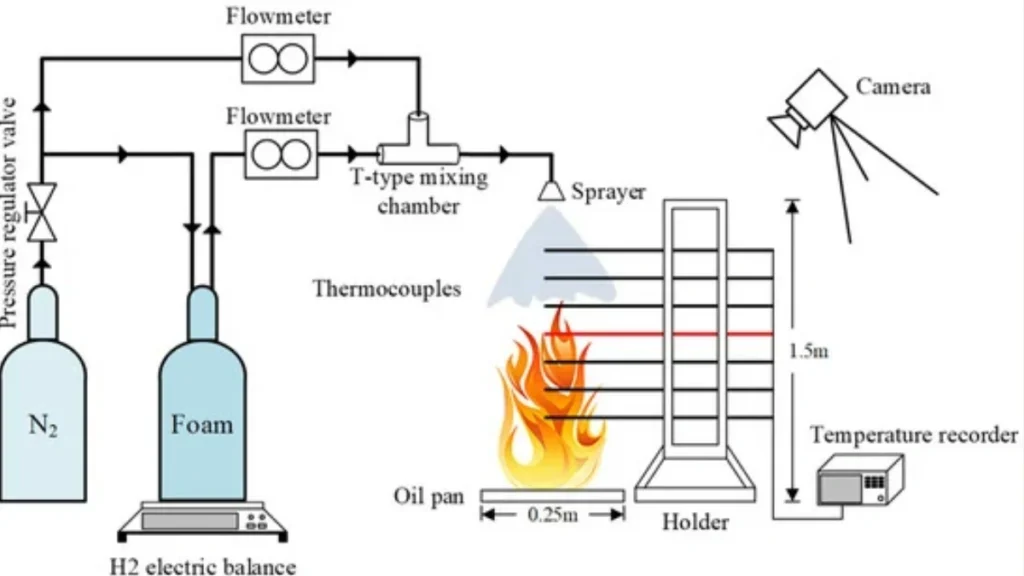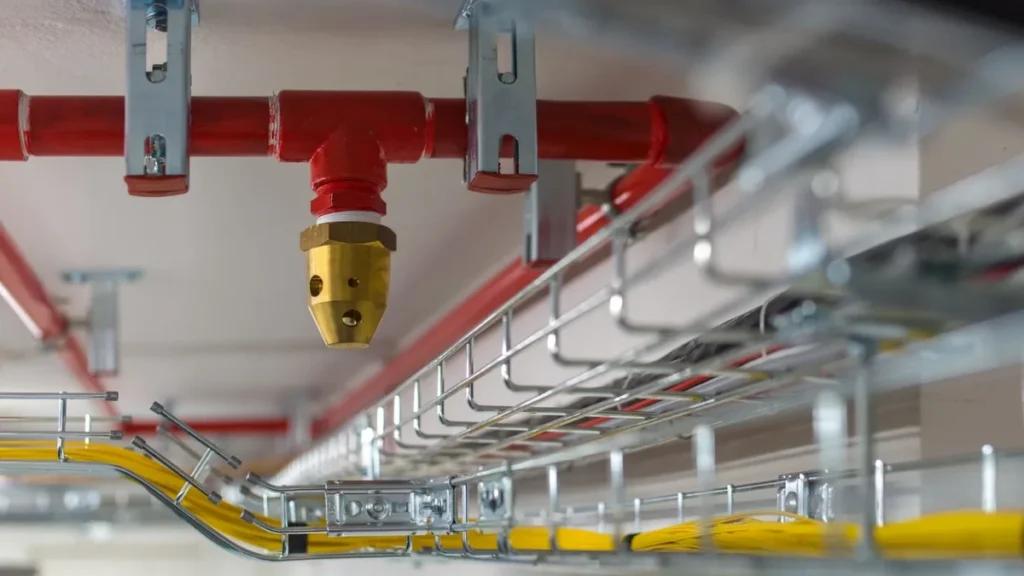
Data centers are the hub of digital operations in the modern world. They analyze and store big amounts of data every second that are used by both customers and businesses on a regular basis. However, this has a high risk, one of the biggest dangers to these facilities is fire. A fire losses by destroying sensitive data, damaging expensive servers, and disrupting business work.
Fire suppression systems are useful in this situation because they protect quickly, identify, manage, and put out fires; they are not only safety systems. These are the solutions to minimize downtime and guarantee company continuity, serving as the first line of defense.
This article will explain about fire suppression systems work, the importance of data centers, and the many types commonly used in these environments.
Fire Alarm Systems: Your Complete Guide to Safety & Protection
The Importance of Fire Suppression System in Data Centres
Data centres, along with their server rooms, form the backbone of our digital world. They keep businesses, services, and applications operational around the clock. However, fire poses one of the most serious risks to their infrastructure. So, without proper protection, even a small fire can lead to devastating losses.
Protecting Sensitive Data and Equipment
The biggest purpose of fire suppression systems is to safeguard valuable data and IT hardware.
- Fires can destroy servers, storage devices, and networking equipment.
- The loss of data can have catastrophic consequences for businesses and clients alike.
- A strong suppression system ensures that a fire is stopped before causing irreversible harm.
Reducing Downtime and Operational Disruptions
Data centres are built for continuous operation, and downtime means lost revenue and broken trust. A fire without suppression could halt services for hours—or even days. A suppression system controls fires quickly so that services resume with minimal disruption.
Ensuring Business Continuity
Fire suppression is also an essential part of a business continuity strategy. It ensures that:
- Data integrity is preserved.
- Assets are protected against financial loss.
- Reputation is maintained, as clients can trust the service to remain reliable.
Fire suppression systems in data centres are not just about putting out flames. They protect the very foundation of businesses in the digital era.
How Fire Suppression Systems Work in Data Centres

Unlike standard buildings, data centres need specialised systems that protect equipment without causing further damage. Here’s how they operate:
Detection and Alarm: The First Line of Defence
Modern fire suppression systems use ultra-sensitive smoke and heat detectors.
- They can identify even the earliest signs of trouble, such as tiny smoke particles or rising heat.
- Once detected, the system triggers alarms to alert staff and prepares for suppression activation.
Activation and Discharge: Immediate Response
When a fire is confirmed:
- The system releases suppression agents, which could be chemical, inert gas, or water mist, depending on the setup.
- These agents act swiftly to extinguish the fire without damaging sensitive equipment.
Aftermath: Containment and Clean-Up
Stopping the fire is just step one. Next comes containment to prevent reignition.
- Gas-based systems leave no residue, making clean-up easy.
- Liquid-based systems may require more effort but still protect equipment better than traditional sprinklers.
The entire process—from detection to clean-up—is designed to ensure data centre safety, continuity, and minimal damage.
Types of Fire Suppression Systems Used in Data Centres

Every data centre is unique, and the fire suppression system must match its environment. Here are the most common types:
Chemical Fire Suppression Systems
- Use chemical agents to break the fire’s chain reaction.
- Quick to act and safe for sensitive electronics.
- Do not conduct electricity, which prevents short circuits.
Inert Gas and Clean Agent Systems
- Suppress fire by lowering oxygen levels, making it impossible for flames to continue.
- Safe for people working in the data centre.
- Eco-friendly and reliable.
Water Mist Systems
- Unlike traditional sprinklers, these use a fine mist instead of heavy streams of water.
- The mist cools the fire and prevents it from spreading without flooding equipment.
- Designed with precise activation settings to avoid accidental discharge.
These systems ensure that fire suppression happens safely and effectively, without compromising operational continuity.
5 Mistakes People Make with Fire Extinguishers and How to Avoid Them
The Unique Fire Risks in Data Centres
Data centres are not like ordinary offices—they have special fire hazards:
- High-powered machines running 24/7 generate heat.
- Electrical faults, overloaded circuits, and dust buildup can spark fires.
- Using traditional water sprinklers is risky because water damages IT equipment.
This is why gas-based and mist-based suppression systems are preferred over conventional solutions.
Fire Detection: The First Step Toward Safety
Before a fire can be stopped, it has to be detected early. Data centres rely on:
- Sensitive smoke detectors to catch even the smallest signs of fire.
- Detectors installed in air ducts and raised floors where cables run.
- Automated responses that trigger alarms and activate suppression if needed.
Early detection is key to saving time, money, and resources.
How the Suppression Process Works in Detail

Once detection confirms a fire, the suppression process begins immediately:
- The system releases gas or clean agents like Novec 1230 or FM-200.
- These agents work by absorbing heat and stopping the chemical reaction that fuels fire.
- Unlike water or foam, they leave no residue, keeping servers safe and dry.
This ensures that even after a fire event, the data centre can resume operations quickly.
Post-Suppression Protocols & Maintenance
Fire suppression doesn’t end with extinguishing flames. Next steps include:
- Sending alerts to the fire department or building control system.
- Shutting down power sources to avoid electrical hazards.
- Conducting a full system inspection and regular maintenance checks to keep everything ready.
Companies like Kanex Fire Solutions Limited provide professional testing and servicing to ensure these systems are always in top condition.
Conclusion
Fires can happen anywhere—even in the highly controlled environment of a data centre. The damage can be enormous, but with the right fire suppression system, risks are minimised. Modern solutions like Novec 1230 and clean agent systems extinguish fires quickly, without harming people or equipment. By investing in a reliable, well-maintained fire suppression system, businesses can protect data, reduce downtime, and ensure uninterrupted operations.
Frequently Asked Questions (FAQs)
1. Which gas is used in fire suppression systems for data centres?
Common gases Novec 1230, FM-200, HFC-227ea, and inert gases like nitrogen or argon are used in fire suppressions system for data ceanters.
2. Which fire suppression system is safest for humans?
Clean agent systems like Novec 1230 are safest for humans because these are non-toxic and eco-friendly.
3. How often should a fire suppression system be tested?
Fire suppression systems should be inspected quarterly and tested annually to ensure they are fully functional.
4. What’s the best fire suppression options for data centres?
Clean agent or inert gas systems are the best for data centers because these protect equipment without leaving residue.
5. Why can’t data centres use traditional sprinklers?
Water can damage servers, drives, and networking equipment, making them unsuitable for these environments.

